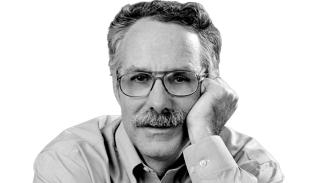
[OP-ED]: Are living standards truly stagnant?
MORE IN THIS SECTION
No doubt, many Americans feel that, except for the rich and segments of the upper middle class, they’ve been treading water economically for years. To take a prominent piece of evidence: In 2015, the average “real” (inflation-adjusted) wage of workers was about $21 an hour, almost exactly what it was in 1975.
That’s nearly half a century without a wage increase!
Or is it?
In a provocative new study, economist Bruce Sacerdote of Dartmouth College reviewed the material well-being of the poorest 50 percent and 25 percent of Americans. What he concluded was that even these families had achieved a “meaningful growth in consumption ... [despite] a prolonged period of increasing income inequality ... and a decreasing share of national income accruing to labor.”
To reach this counterintuitive finding, Sacerdote relied on three types of evidence. The first was personal observation. “If you spend time working with high school students, you notice that even in low-income areas, many of the students have cellphones and have access to cable TV and internet service at home,” he writes. In the 1970s, few if any of these services existed.
This suggests improved living standards but is hardly conclusive. Families might have cut other purchases to afford the new electronic gadgetry. To confirm broader gains, Sacerdote turned to his second class of evidence: other improvements in well-being.
RELATED CONTENT
For the poorest 25 percent of households, he found that the average number of cars per household had increased to 1.4 in 2015, a near doubling from 0.75 in 1970. In addition, the average vehicle in 2014 was 11 years old, also a rough doubling of the 5 years in 1969. The poor are not “forced to drive old cars, but ... modern cars simply last much longer and are probably more reliable.”
Government statistics showed other gains for poorer Americans. For families below the median income -- the midpoint of incomes -- the size of their homes increased by about 8 percent from 1,200 square feet in 1993 to 1,300 square feet in 2009. Outdoor plumbing, about 12 percent for the poorest quarter of Americans in 1970, had virtually disappeared by 2015. There were more indoor bathrooms and more bedrooms.
These increases can be reconciled with stagnant “real” wages, Sacerdote argues, because real wages weren’t stagnant. Inflation was overstated, meaning that real wages -- their purchasing power -- were understated. That’s the third source of his evidence. Although the difference is tiny in any one year, the cumulative effect is large. Sacerdote’s estimates imply hourly wages in 2015 roughly 25 to 50 percent higher than in 1975.
If true, the result is not a pervasive stagnation of living standards -- or even declines -- but what Sacerdote calls a “slow and steady” advance that, to varying degrees, has permeated the income spectrum. Of course, that conclusion is likely to be challenged, because it rests heavily on controversial technical issues in estimating inflation. In addition, many political leaders and economic commentators, of both parties, have a vested interest in criticizing government economic policy.
What’s less contested is that many Americans feel that they’re not getting ahead, whether -- in a material sense -- they are or they aren’t. There are many plausible explanations. Sacerdote speculates that the rise in inequality may make Americans “feel worse ... even if their material goods consumption is rising.” Or maybe it’s just disappointment. People got less than they expected, and the pace of change was so slow that it seemed like stagnation.







LEAVE A COMMENT:
Join the discussion! Leave a comment.